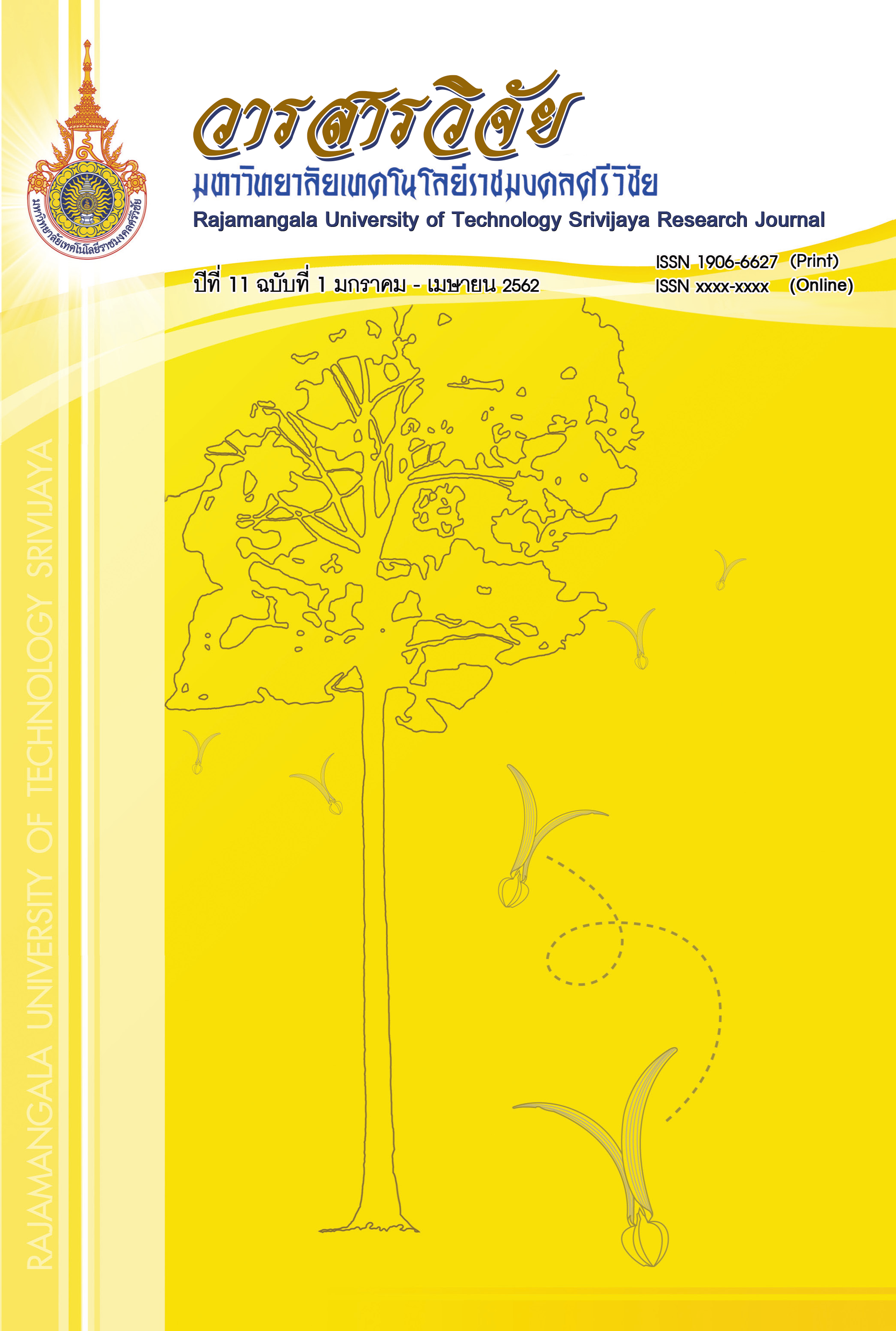The Development of Sustainable Indicators for Khuan Khaeng Swamp Forest Management in Nakhon Si Thammarat Province
Abstract
The development of sustainable indicator for Khuan Khaeng swamp forest management in Nakhon Si Thammarat province aimed to analyze the sustainability of Khuan Khaeng swamp forest, develop the sustainable indicators of Khuan Khaeng swamp forest, and investigate the guidelines on using sustainable indicators for Khuan Khaeng swamp forest management. 13 participants were purposively selected. They were elderly person and local experts, local politicians, government sectors, and scholars/researchers in the area. The study area was Mae Chaem Au Hou sub-district, Chian Yai district, Ban Tun sub-district and Ban Khaeng sub-district, Cha-aud district, Nakhon Sri Thammarat province.
The results of the sustainability analysis of the swamp forest by applying the concept of sustainable development, ecological services, and indicators revealed as follows. 1) The time dimension is divided into before A.D. 1962 (plenty of fish and forest), A.D. 1962 (windstorm), and after A.D. 1962 (invasion, preemption, and claim). 2) The spatial dimension is divided into two areas: the area destroyed by the exploitation of the swamp forest and the area developed based on the concept of commercial farmland development. 3) The group dimension consists of people who live in the swamp forest and the outsider which are divided into three groups: capitalists who buy land from villagers, outsider or tourists, and public and private sectors. 4) The operational dimension is divided into direct actions such as afforestation, forest protection, or forest burning; and, indirect actions such as encouraging people in working and earning extra income. All of the above four dimensions is key concept to indicate the sustainable development of the swamp forest.
The guidelines on using sustainable indicators for swamp forest management are as follows: 1) preventing and controlling forest fires: the local authorities inform villagers to watch over forest destruction; 2) building jobs for villagers to earn income and craft skills such as Krajood production process; 3) creating and preserving the ditch for extinguishing fire in the swamp forest: Bo Lo non-hunting area, forest fire control stations, and local authorities plan to manage drainage ditches and fill water along the waterways; 4) controlling oil palm and rubber plantations: the officers from Land Reform Office, Office of Natural Resource and Environment, and Local Administration jointly check the landscape; 5) preserving Sataew Tree; 6) preserving Paper Bark Tree: the officers from any conservation offices encourage people to stop cutting Sateaw Tree and Paper Bark Tree along the riverside and plant them more in the swamp forest area; 7) increasing Krajood cultivation: local authorities must allocate paddy fields, swamps and water areas to villagers for planting Krajood; and, 8) controlling road expansion in the swamp forest area: any organization should determine appropriate guidelines together. It is recommended to share knowledge and raise awareness on an importance of the swamp forest, raise consciousness on environmental conservation, give people opportunity to take part in forest conservation, jointly protect forest invasion, and employ legal measures to preserve the sustainable environment.
Downloads
Published
How to Cite
Issue
Section
License
The content and information in the article published in Journal of Rajamangala University of Technology Srivijaya It is the opinion and responsibility of the author of the article. The editorial journals do not need to agree. Or share any responsibility.







